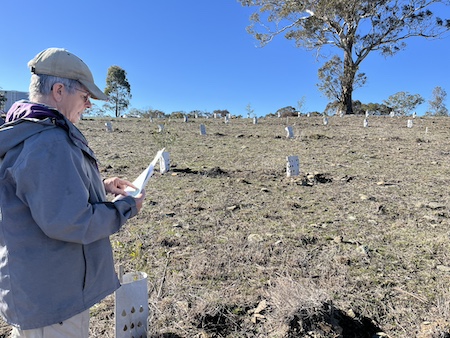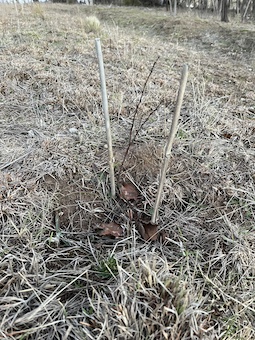Each year, numerous landholders embark on a journey to revegetate their local landscapes with 'climate-ready' tubestock, grown from carefully sourced seeds by dedicated volunteers at the YAN Landcare nurseries.
Recently, I had the pleasure of visiting two different landholders to check out their 2024 plantings and explore the many and various factors that influence whether their plants are thriving or struggling.
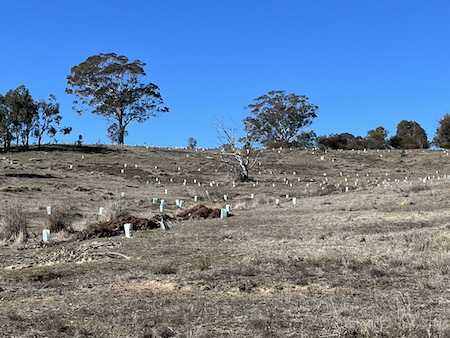
They were enjoyable and fascinating conversations, and a powerful reminder that we are all deeply intertwined with our local environment; even our seemingly small decisions and actions can dramatically shape local ecological outcomes.
These landholders were among the first to commit to monitoring their plantings over the next few years. Each year they will take a couple of photos and check the survival of their plantings. This will be vital feedback for our hard-working nursery volunteers, and it will help us refine our approach, ensuring we're growing the right species and providing the best possible information to everyone receiving plants. If you would like to monitor your plantings from this year, please get in touch!
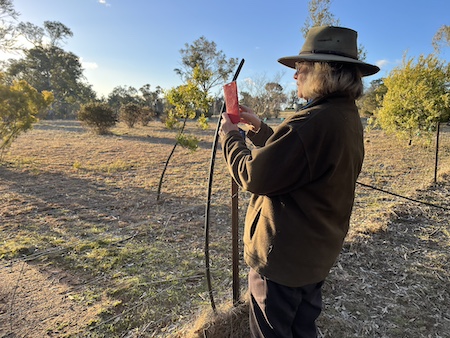
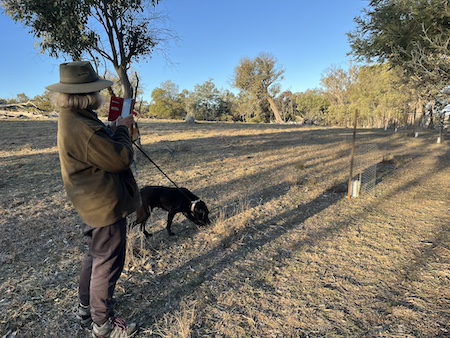
Some of the strong messages from the visits included:
- Tree guards are really important, even when there are no livestock! Kangaroos and other wildlife can eat and trample both plants and small tree guards. There was a very noticeable difference in survival between those plants that were protected, and those that weren’t. Sturdy cardboard, corflute and/or wire guards can all be appropriate depending on your situation.
- Visit your plantings. Take delight in your hard work and the difference you’re making. Remember that even small adjustments to tree guards, or noticing when extra water is needed, can pay off in the long run.
- A bit of extra water can go a long way. If there is a hot dry spring and/or summer following planting, young plants may need a top up of water.
- Plant the right species in the right landscape position. Some species tolerate wet feet, others need excellent drainage, etc. You will see the best results when you do a bit of planning, drawing on information in the Murrumbateman Landcare planting guide or similar resources.
- Complement remnant vegetation. We can supercharge our plantings by placing them strategically near existing native vegetation. For instance, you can plant close enough to remnants to provide excellent habitat for native animals, while being mindful not to negatively impact mature trees by planting too close.
- Ripping on the contour. If you’re planting a lot of tubestock, ripping can make it easy to plant and help plants get established.
- Even a small number of well positioned plants can make a big difference. It only takes a few plants to provide food, shade and shelter to animals travelling through a landscape.
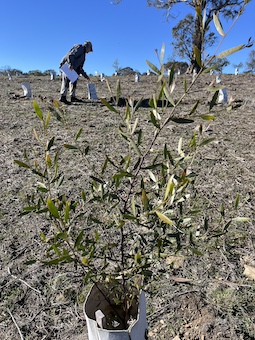
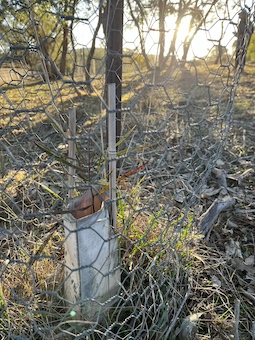
At one property, we were treated to a magical sight: two scarlet robins and a golden whistler feeding right next to the new plantings. It wasn't hard to imagine these spectacular birds making full use of their new habitat in just a few years' time.
Written by Sonya Duus, Climate Ready Revegetation Project Officer
_____________
The Climate Ready Revegetation Project has been assisted by the NSW Government through its Environmental Trust. Landcare Australia Michael King grants enable us to purchase seed from diverse provenances.

